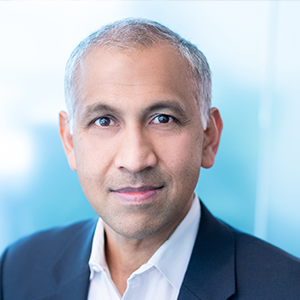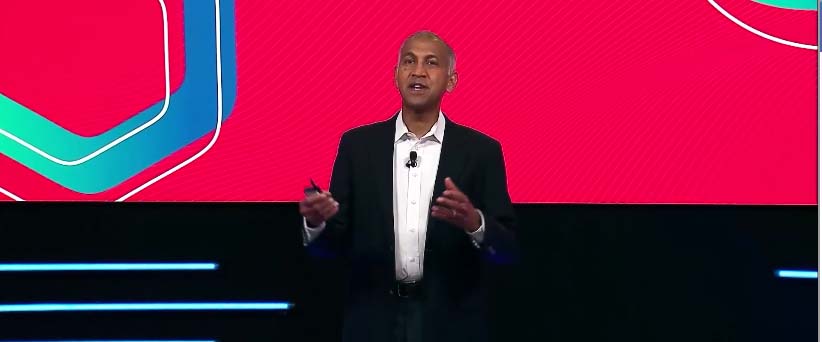Kathy Gibson reports from Nutanix .Next – Covid has wreaked havoc on our lives, fundamentally changing the way we live and work – and cloud computing has a big role to play in how we operate going forward.

Rajiv Ramaswami
Through the last 18 months, technology has kept us connected. We meet, work, even visit the doctor remotely, says Rajiv Ramaswami, CEO of Nutanix, speaking at the Nutanix .Next virtual conference.
“IT has been key,” he says. “Here at Nutanix we have been no different. We have worked with a distributed workforce for 18 months and expect it to remain distributed even after Covid.”
Companies around the world have adapted to remote working and even the world’s biggest and more global-diverse organisations are using technology to communicate, collaborate and work from anywhere, he says.
Nutanix has enabled these scenarios with its cloud and VDI technologies.
“As we all go through the journey to recovery, our focus now shifts from business resiliency to targeted investment as we return to growth.
“These investments will be in modernising infrastructure, moving forward with cloud, and continuing to enable a distributed workforce.”
It is clear that the public cloud will be a big part of cloud strategies, Ramaswami says. “However, how CIOs think in terms of where workloads reside has changed over time. They have gone form believing almost half of their workloads will be in the public cloud by 2023, to now believing just over one-third will be in the public cloud by 2024.
“This is an almost 10 percentage point drop.”
This change is focus has been driven by concerns around data governance, security, performance for edge use cases and public cloud costs, Ramaswami says.
“If you are operating at scale, the cost of clous could be at least double your infrastructure bill.”
Martin Casado, general partner at Andreessen Horowitz, explains that we are still in the early days of cloud.
Although cloud is a $300-billion industry and growing at 20% year on year, this needs to be seen in light of the $3-trillion overall IT market.
“We are still starting to understand the implications of cloud,” he says. “We know the benefits, but are just starting to understand the economic implications.”
Indeed, as the cost of running workloads in the public cloud becomes apparent, some companies are starting to repatriate some workloads to on-premise where there are clear cost advantages.
“In the continuum of solutions, cost is something that should be in the conversation,” Casado says.
In this environment, optionality becomes important, he adds. “The right way forward is multi-cloud.”
To a large extent, this is already a reality, with about three-quarters of organisations now employing a multi-cloud strategy. “Cloud is an operating model and it is important to have optionality,” Casado says.
Ramaswami agrees that it’s critical for companies to do cloud right. “The choice of cloud is dependent on a variety of factors, and CIOs are discovering what works for them as time evolves.
“But it is clear that hybrid multi-cloud deployments are going to be the dominant model going forward.”
Nutanix has evolved its vision of the company to make clouds invisible, allowing customers to focus on their business outcomes rather than cloud complexity, Ramaswami says.
“Our mission is to delight our customers with a simple, open hybrid multi-cloud software platform with rich data services to build, run and manage any application.”
Nutanix is simplifying its product portfolio from 15 to five solutions
“We want to make it simpler for our customers and partners to leverage our solutions.”
The solution focus start with cloud infrastructure and cloud management, enhanced with unified storage, database services and desktop services.
It offers a single platform for the hybrid multi-cloud era, Ramaswami says.
“We are uniquely positioned in this hybrid multi-cloud world, because of our data centricity, simplicity, choice and customer experience.
“We believe these are true differentiators that make us stand out.”
The company is not standing still, however, and Ramaswami says the focus in the AOS 6.0 release is to create an enterprise grade solution for hybrid multi-cloud.

